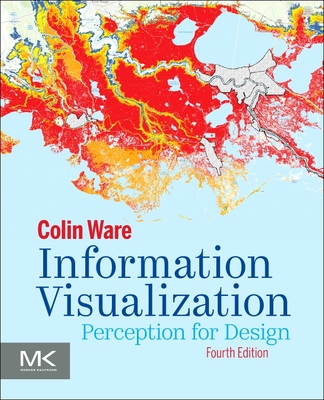How Charts Lie: Getting Smarter about Visual Information
暫譯: 圖表如何誤導:提升視覺資訊的智慧
Cairo, Alberto
- 出版商: W. W. Norton & Company
- 出版日期: 2019-10-15
- 售價: $1,140
- 貴賓價: 9.5 折 $1,083
- 語言: 英文
- 頁數: 256
- 裝訂: Hardcover - also called cloth, retail trade, or trade
- ISBN: 1324001569
- ISBN-13: 9781324001560
-
相關分類:
Data-visualization
-
相關翻譯:
數據可視化陷阱 (簡中版)
買這商品的人也買了...
-
 Deep Learning (Hardcover)
Deep Learning (Hardcover)$1,650$1,617 -
 The Big Book of Dashboards: Visualizing Your Data Using Real-World Business Scenarios (Paperback)
The Big Book of Dashboards: Visualizing Your Data Using Real-World Business Scenarios (Paperback)$1,800$1,710 -
 $2,502Fundamentals of Data Visualization: A Primer on Making Informative and Compelling Figures
$2,502Fundamentals of Data Visualization: A Primer on Making Informative and Compelling Figures -
 TensorFlow 與 Keras - Python 深度學習應用實務
TensorFlow 與 Keras - Python 深度學習應用實務$650$553 -
 3天搞懂技術分析:看懂走勢、解讀線圖,橫掃股市乘風破浪!
3天搞懂技術分析:看懂走勢、解讀線圖,橫掃股市乘風破浪!$320$272 -
 圖解 RPA 機器人流程自動化入門:10堂基礎課程+第一線導入實證,從資料到資訊、從人工操作到數位勞動力,智慧化新技術的原理機制、運作管理、效益法則
圖解 RPA 機器人流程自動化入門:10堂基礎課程+第一線導入實證,從資料到資訊、從人工操作到數位勞動力,智慧化新技術的原理機制、運作管理、效益法則$499$424 -
 深度學習 (Deep Learning)(繁體中文版)
深度學習 (Deep Learning)(繁體中文版)$1,200$1,020 -
 $393RPA 財務機器人開發教程 — 基於 UiPath
$393RPA 財務機器人開發教程 — 基於 UiPath -
 NumPy 高速運算徹底解說 - 六行寫一隻程式?你真懂深度學習?手工算給你看!
NumPy 高速運算徹底解說 - 六行寫一隻程式?你真懂深度學習?手工算給你看!$750$638 -
 Data Analysis with Microsoft Power Bi
Data Analysis with Microsoft Power Bi$1,750$1,663 -
 Information Visualization: Perception for Design (Paperback)
Information Visualization: Perception for Design (Paperback)$2,910$2,765 -
 資料視覺化|製作充滿說服力的資訊圖表 (Fundamentals of Data Visualization)
資料視覺化|製作充滿說服力的資訊圖表 (Fundamentals of Data Visualization)$780$616 -
 88張圖看懂 技術分析:你也能跟他一樣,10年賺到7000萬!
88張圖看懂 技術分析:你也能跟他一樣,10年賺到7000萬!$300$255 -
 $454RPA:流程自動化引領數字勞動力革命
$454RPA:流程自動化引領數字勞動力革命 -
 $120Docker容器技術與應用
$120Docker容器技術與應用 -
 $564數據庫高效優化 : 架構、規範與 SQL 技巧
$564數據庫高效優化 : 架構、規範與 SQL 技巧 -
 $403RPA 學習指南:使用 UiPath 構建軟件機器人與自動化業務流程 (Learning Robotic Process Automation)
$403RPA 學習指南:使用 UiPath 構建軟件機器人與自動化業務流程 (Learning Robotic Process Automation) -
 AI 醫療 DEEP MEDICINE (Deep Medicine: How Artificial Intelligence Can Make Healthcare Human Again)
AI 醫療 DEEP MEDICINE (Deep Medicine: How Artificial Intelligence Can Make Healthcare Human Again)$680$578 -
 超圖解資料科學 ✕ 機器學習實戰探索 - 使用 Python
超圖解資料科學 ✕ 機器學習實戰探索 - 使用 Python$560$476 -
 金融 AI|人工智慧的金融應用
金融 AI|人工智慧的金融應用$880$695 -
 $658UiPath RPA 開發:入門、實戰與進階
$658UiPath RPA 開發:入門、實戰與進階 -
 RPA 入門與應用:機器人流程自動化
RPA 入門與應用:機器人流程自動化$660$627 -
 Keras 大神歸位:深度學習全面進化!用 Python 實作 CNN、RNN、GRU、LSTM、GAN、VAE、Transformer
Keras 大神歸位:深度學習全面進化!用 Python 實作 CNN、RNN、GRU、LSTM、GAN、VAE、Transformer$1,200$948 -
 $1,880Essential Math for Data Science: Take Control of Your Data with Fundamental Linear Algebra, Probability, and Statistics (Paperback)
$1,880Essential Math for Data Science: Take Control of Your Data with Fundamental Linear Algebra, Probability, and Statistics (Paperback) -
 用 Python 學 AI 理論與程式實作 (涵蓋Certiport ITS AI國際認證模擬試題)
用 Python 學 AI 理論與程式實作 (涵蓋Certiport ITS AI國際認證模擬試題)$580$458
商品描述
We've all heard that a picture is worth a thousand words, but what if we don't understand what we're looking at? Social media has made charts, infographics, and diagrams ubiquitous--and easier to share than ever. We associate charts with science and reason; the flashy visuals are both appealing and persuasive. Pie charts, maps, bar and line graphs, and scatter plots (to name a few) can better inform us, revealing patterns and trends hidden behind the numbers we encounter in our lives. In short, good charts make us smarter--if we know how to read them.
However, they can also lead us astray. Charts lie in a variety of ways--displaying incomplete or inaccurate data, suggesting misleading patterns, and concealing uncertainty--or are frequently misunderstood, such as the confusing cone of uncertainty maps shown on TV every hurricane season. To make matters worse, many of us are ill-equipped to interpret the visuals that politicians, journalists, advertisers, and even our employers present each day, enabling bad actors to easily manipulate them to promote their own agendas.
In How Charts Lie, data visualization expert Alberto Cairo teaches us to not only spot the lies in deceptive visuals, but also to take advantage of good ones to understand complex stories. Public conversations are increasingly propelled by numbers, and to make sense of them we must be able to decode and use visual information. By examining contemporary examples ranging from election-result infographics to global GDP maps and box-office record charts, How Charts Lie demystifies an essential new literacy, one that will make us better equipped to navigate our data-driven world.
商品描述(中文翻譯)
我們都聽過「一圖勝千言」這句話,但如果我們不理解自己所看到的內容呢?社交媒體使得圖表、資訊圖和圖解無處不在,並且比以往更容易分享。我們將圖表與科學和理性聯繫在一起;這些華麗的視覺效果既吸引人又具說服力。圓餅圖、地圖、條形圖和折線圖、散佈圖(僅舉幾例)能更好地告訴我們,揭示出隱藏在我們生活中數字背後的模式和趨勢。簡而言之,好的圖表讓我們變得更聰明——如果我們知道如何閱讀它們。
然而,它們也可能使我們迷失方向。圖表以多種方式撒謊——顯示不完整或不準確的數據、暗示誤導性的模式、隱藏不確定性——或者經常被誤解,例如每年颶風季節在電視上播放的令人困惑的不確定性圓錐圖。更糟的是,我們中的許多人缺乏解讀政治家、記者、廣告商甚至我們雇主每天呈現的視覺資料的能力,這使得不良行為者能夠輕易操控這些資料以推動他們自己的議程。
在《How Charts Lie》中,數據視覺化專家阿爾貝托·卡伊羅(Alberto Cairo)教我們不僅要識別欺騙性視覺中的謊言,還要利用好的圖表來理解複雜的故事。公共對話越來越多地受到數字的推動,為了理解這些數字,我們必須能夠解碼和使用視覺信息。通過檢視從選舉結果資訊圖到全球GDP地圖和票房紀錄圖的當代範例,《How Charts Lie》揭示了一種基本的新素養,這將使我們更好地應對數據驅動的世界。













